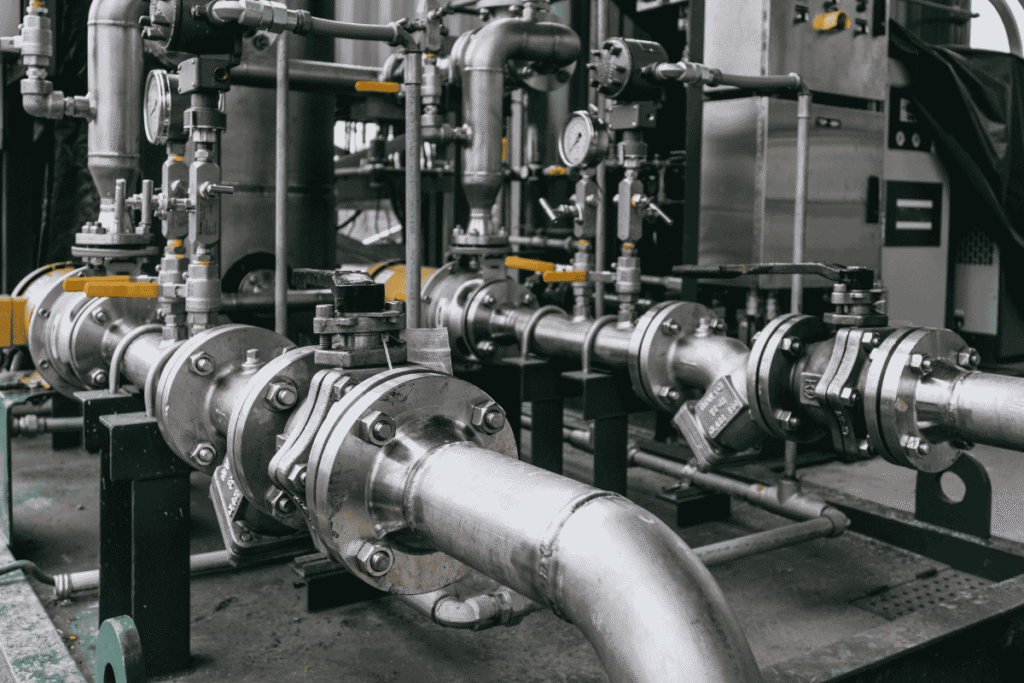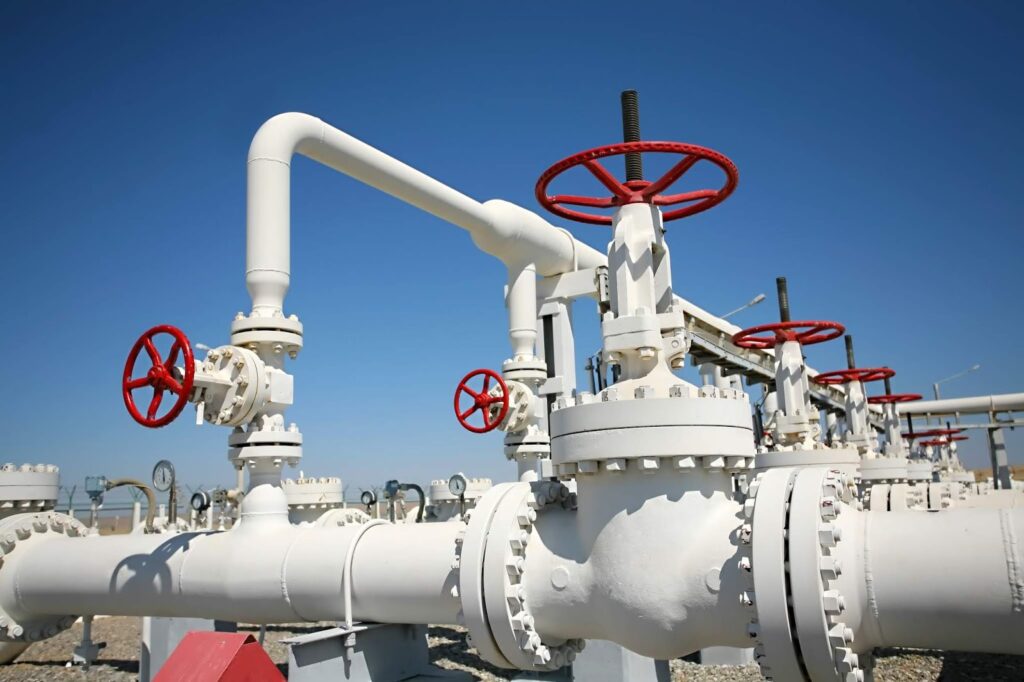Gas pipelines are the backbone of a nation’s energy infrastructure, acting as vital channels that transport natural gas from its source to a wide range of consumers. Whether fueling industries, generating electricity, or heating homes, these pipelines make it all possible. But what exactly is the function of a gas pipeline, and why is it so essential to the modern world?
In this article, we’ll delve into the core functions of gas pipelines, the various types of pipelines, how they operate, the safety measures they follow, and why they’re so important in our everyday lives. Whether you’re exploring energy systems, studying the subject, or working in the energy sector, this guide will provide a complete and clear explanation.
What is a Gas Pipeline?
A gas pipeline is an extensive system of pipes that can carry gaseous fuels, such as natural gas, across great distances. These pipelines are constructed from durable materials like steel or high-strength plastic and are designed to operate under high pressure to ensure efficient gas movement. Gas travels from production sites or storage facilities to consumers, including power plants, factories, commercial businesses, and homes.
Primary Function of a Gas Pipeline
The main role of a gas pipeline is to efficiently and safely transport natural gas from its production source to its final destination. This involves several important functions:
- Transportation of Natural Gas
Gas pipelines serve as transportation systems, moving natural gas from underground reservoirs to end users, spanning long distances with minimal energy loss or delays. - Maintaining Pressure for Continuous Flow
Gas pipelines are designed to operate at specific pressure levels to maintain a continuous and controlled flow of gas. Compressor stations, placed at strategic intervals along the pipeline, boost pressure to ensure optimal gas movement. - Distribution to Multiple End-Users
After long-distance transportation, the gas is transferred to distribution pipelines, which branch out to deliver gas to various users, such as industrial plants, businesses, and homes. - Storage and Load Balancing
Pipelines can also serve as temporary storage systems. During periods of low demand, gas is stored in pipelines or underground facilities, and during peak demand, it is released to balance supply and demand. - Safety and Control
Modern pipelines are equipped with safety features like pressure relief valves, flow meters, and monitoring sensors. These systems detect any irregularities, such as leaks or pressure fluctuations, enabling prompt action to prevent accidents and ensure uninterrupted service.
Types of Gas Pipelines
Gas pipelines can be categorized based on their role in the energy network. The three main types are:
- Transmission Pipelines
These large pipelines carry gas over long distances from production sites to distribution centers. They typically operate under high pressure and are the largest pipelines in the system. - Distribution Pipelines
Smaller in size, distribution pipelines take gas from transmission systems and deliver it to end users. These pipelines operate under lower pressure and are found in cities, towns, and rural areas. - Service Pipelines
These smallest pipelines connect distribution lines to individual homes, factories, or businesses, operating under very low pressure.
How Does a Gas Pipeline Work?
To understand the function of a gas pipeline in greater detail, here’s a breakdown of how gas is transported:
- Extraction
Natural gas is extracted from underground reserves through drilling. Once extracted, it undergoes processing to remove impurities, preparing it for transportation. - Compression
The gas is pressurized using compressor stations. The higher the pressure, the more efficiently it travels through the pipelines, reducing transportation costs. - Transmission
The high-pressure gas travels through transmission pipelines, which can span vast distances and cross challenging terrains like deserts, mountains, or seas. - Metering and Regulating
Before entering distribution networks, gas passes through metering and regulating stations, where pressure is reduced, and the flow is measured. - Distribution and Delivery
Finally, gas is delivered through distribution and service lines to reach residential, commercial, and industrial consumers.
Why Are Gas Pipelines Important?
Gas pipelines play a vital role in numerous sectors:
- Energy Security
Gas pipelines ensure a consistent and reliable supply of energy, reducing dependence on imported fuels and enhancing national energy security. - Economic Growth
Industries rely heavily on natural gas for their operations. Gas pipelines help maintain a steady supply, fueling economic development and creating job opportunities. - Environmental Benefits
Compared to coal or oil, natural gas is a cleaner-burning fuel. Gas pipelines support the wider use of this environmentally friendly energy source. - Convenience for Consumers
Pipelines provide consumers with a continuous supply of gas for everyday activities like cooking, heating, and more, without the need for frequent deliveries or refueling.
Safety Standards in Gas Pipelines
Safety is a top priority in the construction and operation of gas pipelines. Some key safety measures include:
- Leak Detection Systems: Sensors and software monitor pipelines in real time for potential leaks.
- Regular Maintenance: Specialized tools like pipeline inspection gauges (PIGs) ensure the system is inspected and maintained regularly.
- Emergency Shut-off Valves: These valves automatically isolate the pipeline during emergencies.
- Material Standards: Pipelines are made with high-quality, corrosion-resistant materials to ensure durability.
- Public Awareness: Utility companies run programs to educate the public on gas pipeline safety.
Challenges Faced by Gas Pipelines
Despite their many advantages, gas pipelines face challenges, including:
- Environmental Impact
Building pipelines can disrupt ecosystems, especially when crossing rivers, forests, or agricultural areas. - Aging Infrastructure
Many pipelines are decades old and may require updates or replacements to avoid failures. - Security Risks
Pipelines can be targets of vandalism or sabotage, so security measures are crucial to protect critical infrastructure. - Regulatory Compliance
Operators must adhere to various local and international regulations, which can be complex and costly.
Innovations in Gas Pipeline Technology
The gas pipeline industry continues to evolve with advancements in technology that improve safety, efficiency, and sustainability:
- Smart Pipelines: AI and sensors are used to detect issues automatically and optimize gas flow.
- Robotics: Drones and robotic crawlers are now employed for inspections, especially in hard-to-reach areas.
- Green Pipelines: New materials and coatings help reduce pipeline corrosion and environmental impact.
- Hydrogen Blending: Some pipelines are being modified to carry hydrogen mixed with natural gas, facilitating the integration of renewable energy.
Conclusion
Gas pipelines serve more than just the function of transporting gas; they form a highly controlled, sophisticated system that ensures the safe, efficient, and reliable delivery of energy. They are indispensable to modern infrastructure, powering industries, heating homes, and supporting the shift to cleaner energy sources.
Understanding the role of gas pipelines highlights their critical importance in our everyday lives. With continuous innovation and a focus on environmental sustainability, gas pipelines will adapt to meet the needs of a rapidly changing world, ensuring the steady flow of energy that powers progress. rapidly changing world, ensuring the steady flow of energy that powers progress.




